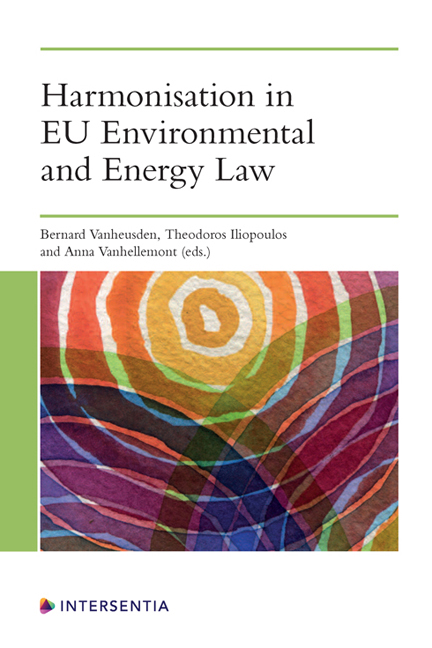To Codify or not to Codify EU Environmental Law: That is not the Question
Published online by Cambridge University Press: 26 May 2022
Summary
INTRODUCTION
It is striking that this book puts harmonisation and codification in environmental and energy law again on the agenda. At first blush that may seem surprising. Looking at the literature one can easily see that the codification of environmental law was an issue that was high on the agenda in the last decade of the previous century. A team around the famous Ghent Professor Hubert Bocken devoted an entire conference to the codification of environmental law and dedicated a book to that topic. But that conference took place on 21–22 February 1995, more than 25 years ago.
The popularity of a codification of environmental law in that period can partially be explained by the fact that environmental law had emerged as a rather scattered body of various sectoral laws that in many countries was spread over a wide variety of different statutes and regulations. It can therefore be understood that codification, in the sense of bringing together all existing environmental legislation in one legislative document, was popular in that period. It was popular in academia, but the concept of codification was also popular at the policy level; in many European Member States some harmonised environmental law had been introduced or was at least discussed. Already in that period the objectives of codification were discussed whereby a distinction was made between, on the one hand, a simple bringing together of existing environmental laws into one legislative document and, on the other hand, a more substantive operation whereby, for example, procedures and enforcement would also become harmonised. The first type of operation is more a coordination of existing environmental law and could be qualified as a restatement, which mostly provides esthetical benefits and the benefit of easier access to the contents of environmental law. This type of coordination was described by Gilhuis as a middle point between the totally segregated sectoral environmental legislation, which still existed in many Member States at that time, and fully integrated harmonised environmental law. Codification was considered also a more substantive exercise, assuming that it would go beyond a restatement of existing laws, but would also harmonise (and thereby improve) permitting, standardsetting and enforcement procedures.
- Type
- Chapter
- Information
- Harmonisation in EU Environmental and Energy Law , pp. 9 - 26Publisher: IntersentiaPrint publication year: 2022



